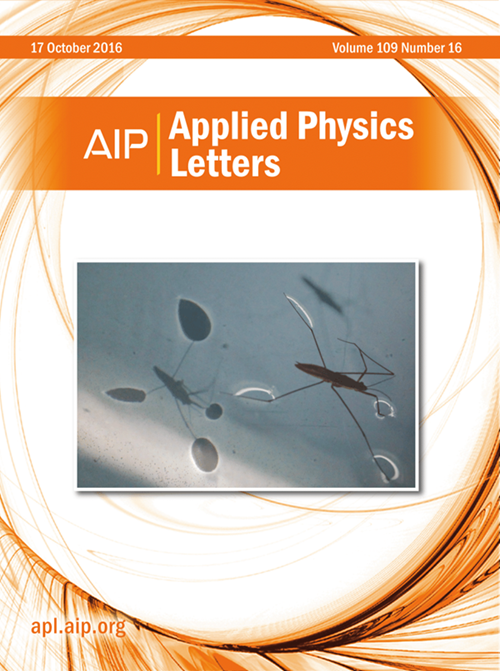分子间爆炸对多石墨烯结构导热性的影响
IF 3.5
2区 物理与天体物理
Q2 PHYSICS, APPLIED
引用次数: 0
摘要
我们已经开发了一种技术流程,可以获得导热系数为500 W/的致密多石墨烯结构(CMGSs) (m×K)。我们提出了石墨嵌入过程的“软”机制,它产生五层石墨烯交替堆叠的砾岩,而“标准”机制的特点是形成三层石墨烯交替堆叠。软晶和标准晶的x射线衍射分析和透射电镜研究表明,这些材料的热导率受到纳米晶缺陷密度、尺寸分布和取向错误的限制。讨论了微变形和残余宏观应力对复合材料导热系数的影响。与标准方法相比,软方法有助于形成具有较少内部结构破坏的cmgs,其特点是增加了纳米晶体,减少了错取向角,导致导热系数提高了38%。提出了一个包含这些关键结构因素的精细模型来控制cmgs中的热传输。该方法可制备出导热系数比铜高25%、密度比铜低5倍的cmgs基材料。我们的研究结果表明,精确调节分子间爆炸参数,可以设计出具有工程导热特性的轻质、柔性碳基材料,用于先进的热管理应用。本文章由计算机程序翻译,如有差异,请以英文原文为准。
Effect of intermolecular explosion on thermal conductivity in multi-graphene structures
We have developed a technological process for obtaining compacted multi-graphene structures (CMGSs) with the thermal conductivity of 500 W/(m×K). We propose the “Soft” regime of graphite intercalation procedure, which yields conglomerates with alternating stacks of five graphene layers, while the “Standard” regime is characterized by the formation of alternating stacks of three graphene layers. X-ray diffraction analysis and transmission electron microscopy studies of Soft and Standard CMGS have shown that the thermal conductivity of these materials is limited by defect density, size distribution, and misorientation of nanocrystallites. The effect of micro-deformations and residual macro-stresses on thermal conductivity of CMGS is discussed. The Soft method facilitated the formation of CMGSs with a less disrupted internal structure, characterized by increased nanocrystallites and reduced misorientation angles relative to the Standard approach, resulting in a 38% enhancement in thermal conductivity. A refined model is proposed that incorporates these key structural factors governing heat transport in CMGSs. The proposed method made possible the preparation of CMGS-based material with a thermal conductivity 25% higher and with a density five times lower than those of copper. Our findings demonstrate that precise regulation of the intermolecular explosion parameters enables the design of lightweight, flexible carbon-based materials with engineered thermal conductivity characteristics for advanced thermal-management applications.
求助全文
通过发布文献求助,成功后即可免费获取论文全文。
去求助
来源期刊

Applied Physics Letters
物理-物理:应用
CiteScore
6.40
自引率
10.00%
发文量
1821
审稿时长
1.6 months
期刊介绍:
Applied Physics Letters (APL) features concise, up-to-date reports on significant new findings in applied physics. Emphasizing rapid dissemination of key data and new physical insights, APL offers prompt publication of new experimental and theoretical papers reporting applications of physics phenomena to all branches of science, engineering, and modern technology.
In addition to regular articles, the journal also publishes invited Fast Track, Perspectives, and in-depth Editorials which report on cutting-edge areas in applied physics.
APL Perspectives are forward-looking invited letters which highlight recent developments or discoveries. Emphasis is placed on very recent developments, potentially disruptive technologies, open questions and possible solutions. They also include a mini-roadmap detailing where the community should direct efforts in order for the phenomena to be viable for application and the challenges associated with meeting that performance threshold. Perspectives are characterized by personal viewpoints and opinions of recognized experts in the field.
Fast Track articles are invited original research articles that report results that are particularly novel and important or provide a significant advancement in an emerging field. Because of the urgency and scientific importance of the work, the peer review process is accelerated. If, during the review process, it becomes apparent that the paper does not meet the Fast Track criterion, it is returned to a normal track.
 求助内容:
求助内容: 应助结果提醒方式:
应助结果提醒方式:


